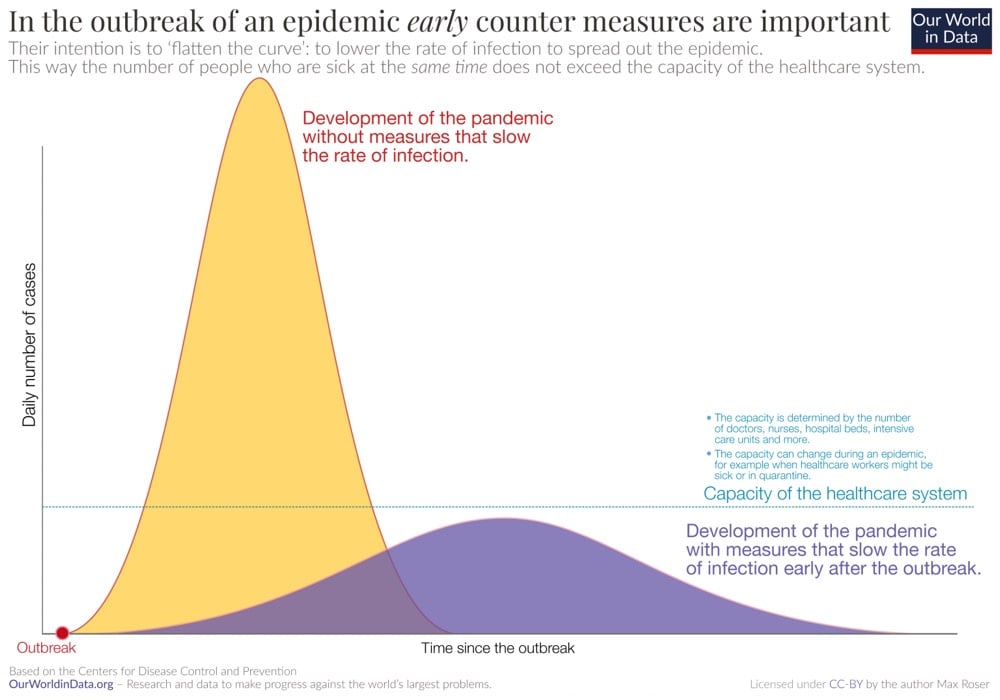Exponential Growth and Epidemics
From 3blue1brown’s Grant Sanderson, this is an excellent quick explanation of exponential growth and how we should think about it in relation to epidemics like COVID-19. Depending on how rusty your high school math is, you might need to rewind a couple of times to fully grasp the explanation, but you should persevere and watch the whole thing.
The most important bit is at the end, right around the 7:45 mark, when he talks about how limiting person-to-person exposure and decreasing the probability of exposures becoming infections can have a huge effect on the total number of people infected because the growth is exponential. If large numbers of people start doing things like limiting travel, cancelling large gatherings, social distancing, and washing their hands frequently, the total number of infections could fall by several orders of magnitude, making the exponential work for us, not against us. Small efforts have huge results. If, as in the video, you’re talking about 100 million infected in two months (at the current transmission rate) vs. 400,000 (at the lowered rate) and if the death rate of COVID-19 is between 1-3%, you’re looking at 1-3 million dead vs. 4-12,000 dead.
So let’s start flattening that exponential curve. South Korea and China both seem to have done it, so there’s no reason the rest of the world can’t through aggressive action. (thx, david)
Update: Vox has a nice explainer on what epidemiologists refer to as “flattening the curve”.
Yet the speed at which the outbreak plays out matters hugely for its consequences. What epidemiologists fear most is the health care system becoming overwhelmed by a sudden explosion of illness that requires more people to be hospitalized than it can handle. In that scenario, more people will die because there won’t be enough hospital beds or ventilators to keep them alive.
A disastrous inundation of hospitals can likely be averted with protective measures we’re now seeing more of — closing schools, canceling mass gatherings, working from home, self-quarantine, avoiding crowds - to keep the virus from spreading fast.
Epidemiologists call this strategy of preventing a huge spike in cases “flattening the curve”.
Here’s the relevant graphic explanation from Our World in Data’s COVID-19 package:






Stay Connected